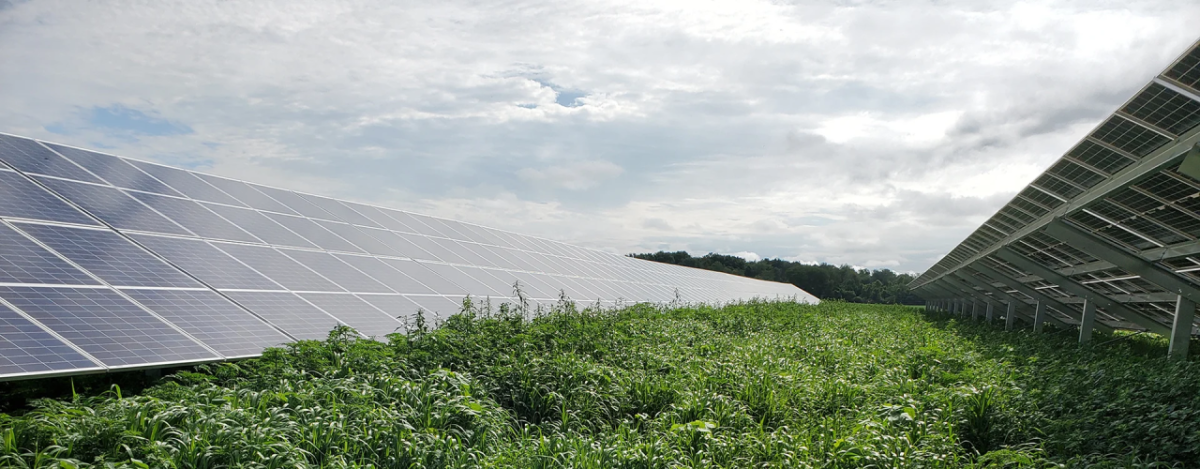The High Cost of Climate Inaction
WSP USA’s Stacy Swann and Darius Nassiry explain why investment in adaptation and resilience technologies today is critical to handling future climate impacts.

by Stacy Swann WSP USA Executive Vice President; Founder/CEO, Climate Finance Advisors and Darius Nassiry WSP USA Director, Climate Finance
For decades, scientists have studied the risks of increasing greenhouse gas (GHG) emissions on the earth’s climate. The signals of early-stage climate change are becoming unmistakably visible. Extreme weather events increasingly point to a future that will be more dangerous than the climate that has so far underpinned human progress.
As the recent Intergovernmental Panel on Climate Change (IPCC) report on climate adaptation stated: “Global warming, reaching 1.5°C in the near-term, would cause unavoidable increases in multiple climate hazards and present multiple risks to ecosystems and humans.”
The latest IPCC summary on climate mitigation also emphasized that carbon emissions have increased since 2010. The UN Secretary General called the IPCC report on physical science of climate change, “a code red for humanity” and warned that “without deep carbon pollution cuts now, the 1.5°C goal will fall quickly out of reach.”
If GHG emissions continue to rise, the IPCC predicts that 1.5°C will slip out of reach. Meanwhile, the cost of climate damage, already in the hundreds of billions of dollars, will continue to mount.
To maintain a chance to avoid the worst climate impacts, science says we need rapid, deep emissions cuts – at least 50 percent by 2030. We have limited time to transform investment patterns and capital allocation to avoid crossing tipping points that could lead to a hothouse earth.
The financial system is increasingly seen as crucial to averting such a scenario – not only to shift toward green investments, like renewable energy, but also to reallocate capital from fossil fuel-related investments to be consistent with net-zero goals.
As the Task Force on Climate-Related Financial Disclosures (TCFD) has shown, changes within financial institutions – such as climate mainstreaming in investment processes – can be slow. Financial institutions that start with managing their own footprint and supply chains will deliver limited climate impact compared to aligning their balance sheets to lower emissions investments that embed resilience and minimize their exposure to stranded assets.
Despite the innovation the climate crisis has fostered, many investments remain anchored in the fossil fuel economy. Today, we need three to six times more investment to maintain a livable climate. In the energy sector, to achieve net zero by 2050 investment should flow to clean energy, such as solar, wind and batteries, and related investments, according to the International Energy Agency, whose net zero roadmap includes “no investment in new fossil fuel supply projects.”
Additionally, we need investment in adaptation and resilience across sectors and geographies because GHG concentrations have “baked-in” future warming. Infrastructure and buildings need to incorporate resilience to handle climate impacts in the future. Much more public funding will be needed for adaptation to climate change, which remains underfinanced, partly because these projects often lack a revenue stream that can support financial returns for investors.
To mobilize more public money, reform of public finance institutions may be needed.
Treasury Secretary Janet Yellen recently pointed to the need to re-invent the Bretton Woods institutions – the World Bank and the International Monetary Fund – to better be able to deal with 21st century challenges, such as climate change. As Secretary Yellen said, “[We] face challenges that require investment on a scale that an international institutional can’t manage on its own…. And the investments needed for climate change will add on up to just trillions and trillions of dollars.”
These institutions need to be modernized to tap the global pools of capital available to invest in renewable energy and climate-resilient infrastructure.
To make progress, commitments to make more climate-friendly investments and developing financial products to support sustainable infrastructure have shown potential and should be scaled up rapidly. Internal investment processing and portfolio management functions need to integrate climate-related risk considerations into investment decisions. While investment portfolios will take time to reflect a climate-aligned, resilient approach, in an ideal scenario, we would see an orderly shift to a net-zero economy.
If we adopt clean energy, invest in low-carbon transport, expand sustainable infrastructure, and promote transparency of climate risks, then assets can re-price in a way that avoids major losses. If we accelerate investment – including the built environment, energy and water systems and transport infrastructure – we can manage the transition to a lower-carbon economy. And if we move at the speed and scale needed, then we can minimize dislocation from the impacts of climate change.
Stacy Swann is founder and CEO of Climate Finance Advisors and executive leader at WSP USA. Darius Nassiry is director, climate finance, and practice leader, Climate Change and Sustainability at WSP USA.
[To subscribe to Insights, contact the editorial staff at insights@wsp.com.]

